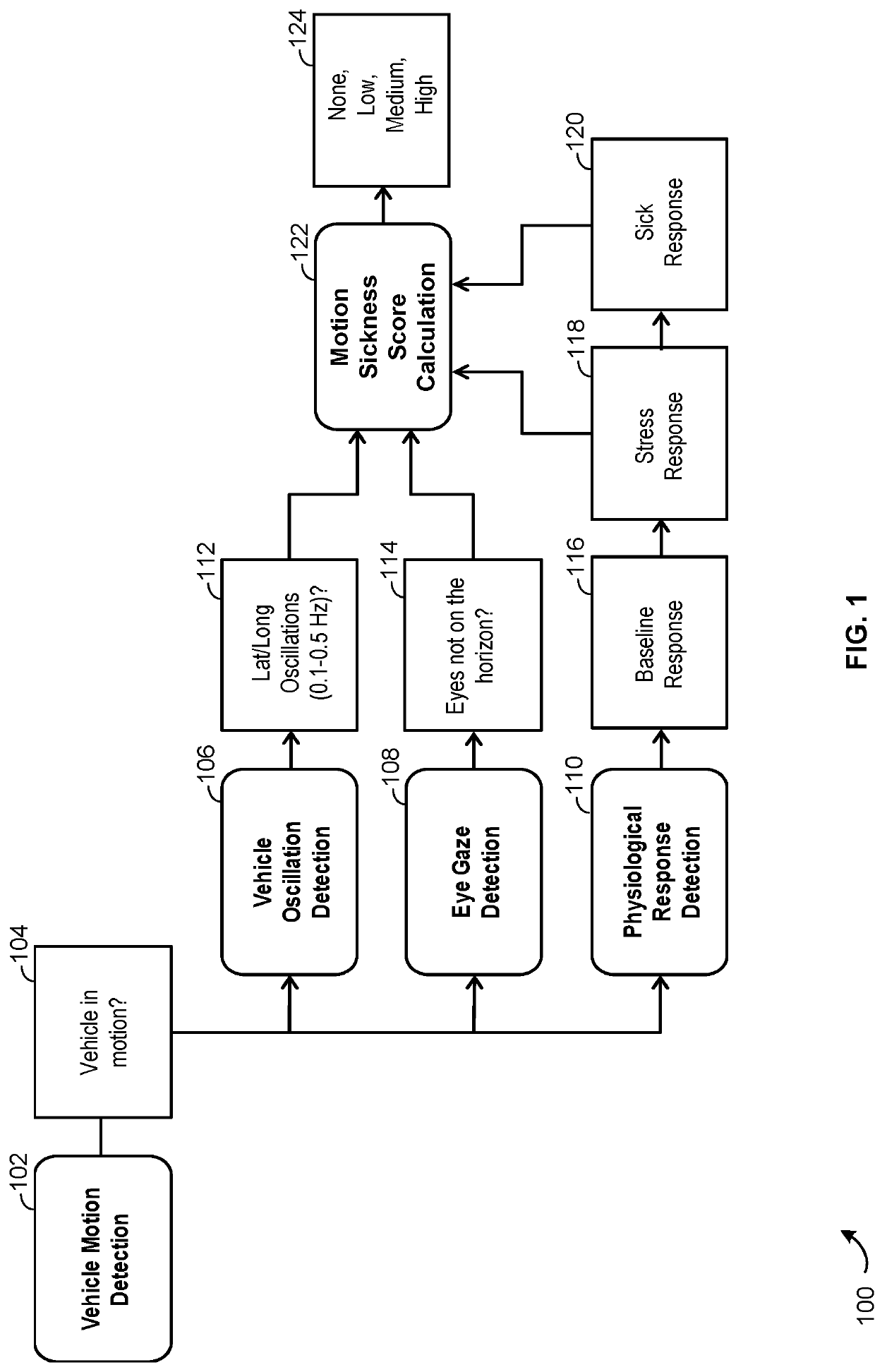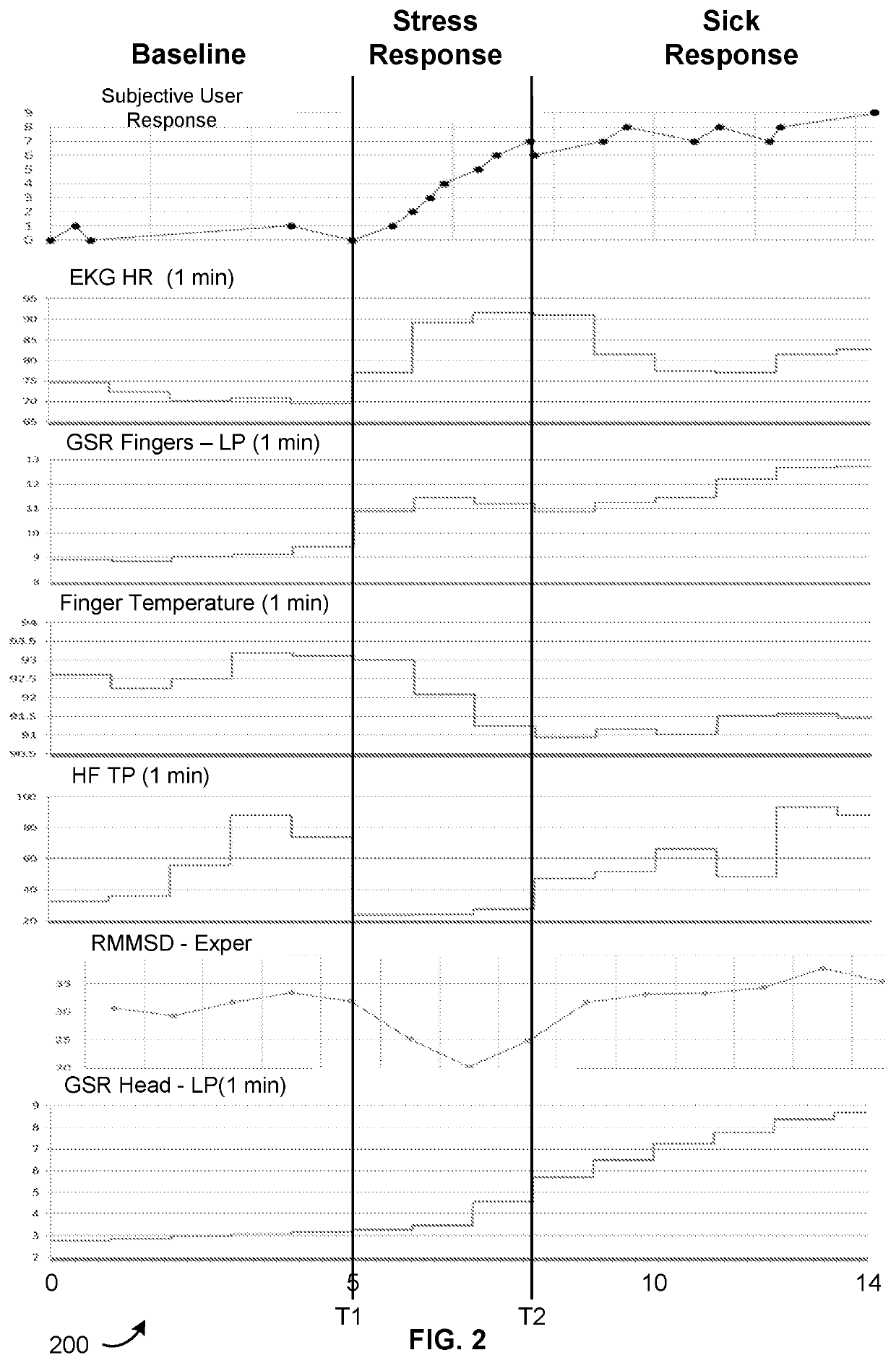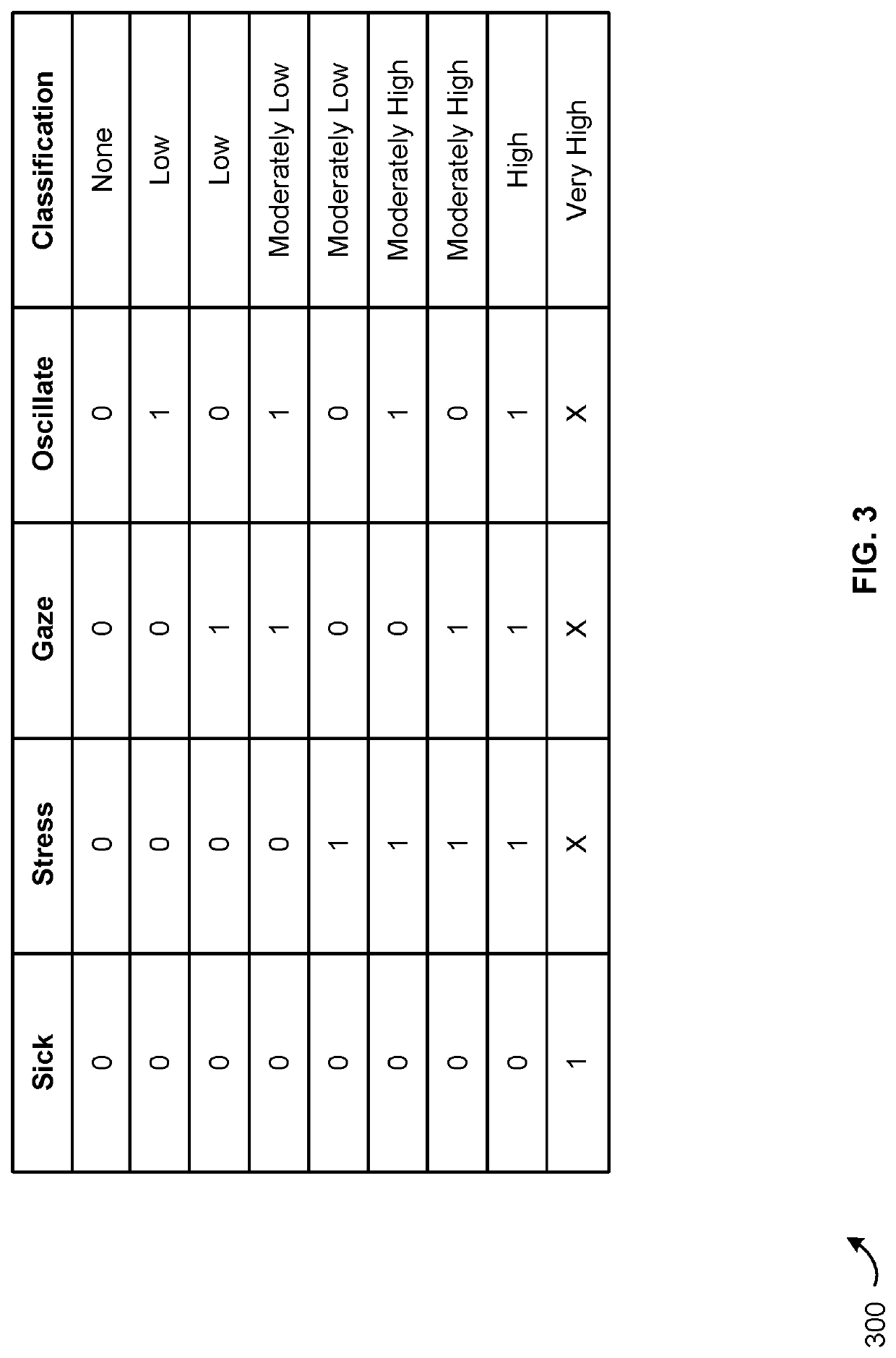Motion sickness detection system for autonomous vehicles
a technology for autonomous vehicles and motion sickness, applied in the direction of diagnostic recording/measuring, process and machine control, instruments, etc., can solve the problems of affecting cognitive and emotional state, nausea and physiological discomfort, etc., to prevent or ameliorate prevent an escalation of improve the degree of motion sickness experienced by the user
- Summary
- Abstract
- Description
- Claims
- Application Information
AI Technical Summary
Benefits of technology
Problems solved by technology
Method used
Image
Examples
Embodiment Construction
[0019]Several illustrative embodiments will now be described with respect to the accompanying drawings, which form a part hereof. While particular embodiments, in which one or more aspects of the disclosure may be implemented, are described below, other embodiments may be used and various modifications may be made without departing from the scope of the disclosure or the spirit of the appended claims.
[0020]It is estimated that 37% of American riders of autonomous vehicles are expected to experience motion sickness resulting at least in part from engaging in various activities such as reading, texting, and utilizing a smart phone or other device while the vehicle is in motion. Motion sickness susceptibility may be heightened when riding in autonomous vehicles because a person is incapable of controlling and / or anticipating the direction of motion and due to the conflict between the vestibular, proprioceptive, and visual senses (i.e., the perception of body movement as determined by t...
PUM
 Login to View More
Login to View More Abstract
Description
Claims
Application Information
 Login to View More
Login to View More - R&D
- Intellectual Property
- Life Sciences
- Materials
- Tech Scout
- Unparalleled Data Quality
- Higher Quality Content
- 60% Fewer Hallucinations
Browse by: Latest US Patents, China's latest patents, Technical Efficacy Thesaurus, Application Domain, Technology Topic, Popular Technical Reports.
© 2025 PatSnap. All rights reserved.Legal|Privacy policy|Modern Slavery Act Transparency Statement|Sitemap|About US| Contact US: help@patsnap.com



